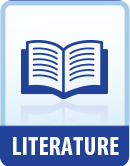|
This section contains 1,224 words (approx. 5 pages at 300 words per page) |

|
SOURCE: Ury, Marian. “Recluses and Eccentric Monks: Tales from the Hosshinshu by Kamo no Chōmei.” Monumenta Nipponica 27, no. 2 (summer 1972): 149-73.
In the following excerpt, Ury provides background for the Hosshinshū.
In the last decades of the twelfth century Japan was ravaged by earthquake, famine, pestilence and civil war. The burden of these repeated disasters, both natural and man-made, fell doubtless most heavily on the common people, but among the sufferers were also members of the aristocracy, little able to withstand or comprehend fully the forces of social upheaval that threatened their wealth, authority and even physical safety. Men of all degrees turned to religion in increasing numbers. Not a few men of the upper classes sought refuge from the uncertainties of existence in the capital by escaping into Buddhist eremitism, for which Japanese religious and artistic tradition furnished ample precedent. Of these recluses perhaps the most famous...
|
This section contains 1,224 words (approx. 5 pages at 300 words per page) |

|


